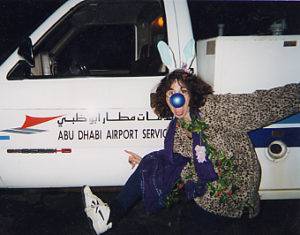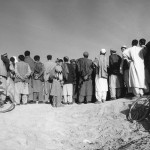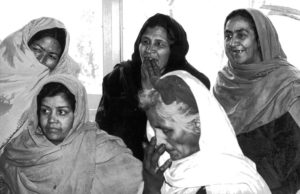To follow up on part one, a history of clowning, this little section looks at ‘what is clowning’ and how that was understood early in the history of Islam in the Silk Road countries.

What is clowning?
The exchange of styles, skills, characterizations and so forth was (and is) facilitated by the itinerant nature of performers. Three main reasons why performing clowns traveled were:
*The search for new markets
*As part of royal court retinue (they were expected to accompany various court members)
*Self-preservation; as laws changed and social pressure increased, it became in the clowns best interest to keep moving
To elaborate,
The first factor was/is especially motivating for street performers: even if one is constantly developing new material, one cannot earn a living forever performing solely in one town.
Clowns retained by the court traveled with the royal entourage on sojourns and even conquests, in addition to accompanying ambassadors or other court personnel on various journeys.
The codification of Islam, the rising heat of debate between the learned as to the appropriateness of humor, and the widely varying enforcement of Muslim law to combat magic and other unnatural acts against God fueled the practice of roving. Magic and other acts against God sometimes included juggling, balancing tricks, acrobatics, slapstick, and unnervingly accurate mimicry.
In addition to providing impetus for a semi-nomadic lifestyle, the more strident legal measures also compelled many clowns to alter their performance style in order to protect themselves; to quote Gogol, “Even the man who is afraid of nothing is afraid of laughter.” These performers adapted the art of storytelling to create a “once removed” form of clowning, thereby protecting themselves without relinquishing social commentary. At this point many people wonder how storytelling can be clowning- are they storytellers or clowns? Acrobats, jugglers, storytellers, et cetera may also be clowns. They may clown in some moments and not in others. In the same vein, although many clowns wear masks or mask-like makeup, others do not. Moreover, the presence of makeup/mask does not mean that a performer is performing in a clown role. Clowning is a social phenomenon rather than an isolated incident or a set of prescribed actions. It is like a car- if I have a ‘race car’, am I automatically racing? No. I may be buying groceries. If I do not have a ‘race car’ am I never able to race? No. You and I could challenge each other verbally or non-verbally at a stoplight.
To provide context for understanding clown modalities, it is important to understand critical clown elements. For the purposes of this blog, we will use the following parameters to define ‘clowning’:
*There must be both a performer and an audience
*The performers and audience have an agreement; they enter willingly into a space-time in which different social rules apply, a sacred negotiation space
*The performer has a social status outside of the linear and vertical social strata
*The performer communicates a context of affection/caretaking of the audience/community
*The performance instigates awareness and/or change
The first four elements make possible the last, and without the impetus to awareness and/or change (and the awareness may be as subtle as the discovery of wonder), the performance cannot be thought of as clowning. It is the delightful but startling newness that compels this kind of laughter, opening the heart to momentary clarity and the possibility for transformation. In support, I share with you the writings of three great Islamic physicians:
‘Alî b. Rabban at-Tabarî: “Laughter is (the result of) the boiling of the natural blood (which happens) when a human being sees or hears something that diverts him and thus startles and moves him.”
‘Imrân: “Laughter is defined as the astonishment of the soul at observing something that it is not in a position to understand clearly (ta’ajjubu n-nafsi min shay’in lam yuqaddar lahâ dabtuhû) . . . The matter and gravitational force serving laughter is the pure, even-tempered blood that is distributed all over the body. Its end is the awareness of the soul, when laughing, of the meaning of laughter by gaining clarity about its purpose as either humorous or serious.”
Kindî: “Laughter —- An even-tempered purity of the blood of the heart together with an expansion of the soul to a point where is joy becomes visible.”
Without question, the personal discovery of the viewer is usually rooted in an altered social perspective, but it doesn’t need to be. Sometimes the clown is simply evoking awe and delight, reminding us that “There are more things in Heaven and earth, Horatio, than are dreamt of in your philosophy”. That there could be “more things in Heaven and earth” is at the crux of the debate in Islam as to whether or not magic, circus tricks, clown antics and so on ‘fly in the face of God’. Despite increased opposition at the beginning of the second Common Era millennium, there remained a faction that believed such performances were not the result of invoking the devil or false gods, but the revealing of the measure, beauty and wonder ‘of God’s capacity’.

